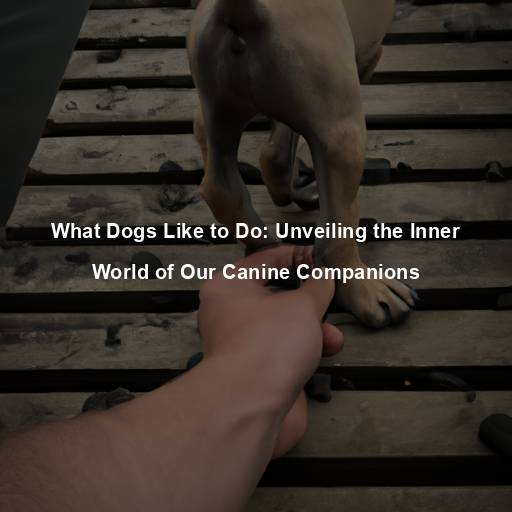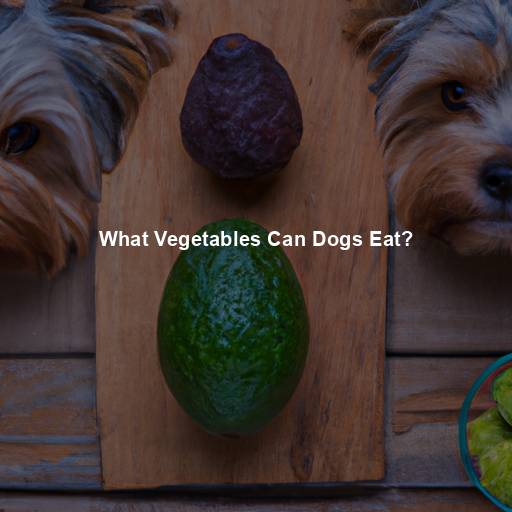Why Do Dogs Yawn When You Pet Them?
Last Updated on November 14, 2023 by Evan
Contents [hide]
- 1 Understanding the Canine Language: Yawning as a Communication Tool
- 1.1 Yawning as a Sign of Relaxation and Contentment
- 1.2 Yawning as a Form of Empathy
- 1.3 Yawning as a Signal of Stress or Anxiety
- 1.4 Yawning as a Means of Communication
- 1.5 Yawning as a Result of Physical Stimulation
- 1.6 Yawning as a Habit or Contagious Behavior
- 1.7 Yawning as a Response to Arousal or Excitement
- 1.8 The Importance of Individual Differences
- 1.9 The Role of Neurochemistry
- 1.10 Yawning and Social Contagion
- 1.11 The Evolutionary Perspective
- 1.12 Individual Differences in Yawning Behavior
- 1.13 The Importance of Context and Body Language
- 1.14 Enhancing the Bond Through Yawning
- 1.15 Seeking Professional Guidance
- 1.16 The Beauty of Canine Communication
- 1.17 Breed-Specific Yawning Patterns
- 1.18 Age and Yawning
- 1.19 The Influence of Human Interaction
- 1.20 Yawning in Rescue Dogs
- 1.21 The Intricacies of Canine Communication
- 1.22 The Joys of Pet Companionship
- 2 FAQs – Why do dogs yawn when you pet them?
Understanding the Canine Language: Yawning as a Communication Tool
As pet owners, we often find ourselves fascinated by the various behaviors and gestures displayed by our furry companions. One such behavior that has puzzled many is the act of yawning when we pet our dogs. While it may seem perplexing at first glance, yawning in dogs serves as a form of communication, conveying a range of messages and emotions. In this article, we delve into the world of dog behavior to explore the reasons behind this intriguing phenomenon.
Yawning as a Sign of Relaxation and Contentment
Have you ever noticed that when you lovingly stroke your furry companion, they often respond with an adorable yawn? Well, believe it or not, this is actually a sign that they are feeling incredibly relaxed and content. Just like us humans, dogs can’t help but yawn when they are in a state of peaceful bliss. So, the next time your pup lets out a big yawn during cuddle time, take it as a heartwarming testament to the soothing effect you have on them.
Yawning as a Form of Empathy
Dogs are known for their remarkable ability to sense and empathize with human emotions. When we pet our dogs, they may yawn as a way of mirroring our behavior. This empathetic response is a reflection of their deep connection with us and their natural inclination to synchronize with our actions. By yawning in response to our touch, dogs demonstrate their empathy and their desire to bond with us on a deeper emotional level.
Yawning as a Signal of Stress or Anxiety
When dogs let out a yawn, it’s easy for us to assume they’re simply tired or content. However, it’s essential to understand that yawning can signify much more than that for our furry friends. In certain situations, when dogs yawn while receiving affection, it could indicate that they’re experiencing stress or unease in their surroundings. This becomes especially true if the dog demonstrates additional signs of anxiety like heavy panting, restlessness, or avoiding making eye contact.
Yawning as a Means of Communication
There’s no denying that communication is the backbone of every relationship, even the unconventional and heartwarming bond we forge with our furry companions. Believe it or not, our four-legged friends have their own unique way of expressing themselves, and one puzzling yet fascinating form of canine communication is yawning. Yes, you read that right. Yawning can actually serve as a subtle yet profound way for dogs to communicate their needs, desires, or even their perplexing concerns.
Yawning as a Result of Physical Stimulation
Another possible reason for dogs yawning when petted is the physical stimulation they receive. Petting can activate certain pressure points and release endorphins, which can induce a feeling of relaxation and even drowsiness. Yawning can be a natural response to this physical stimulation, similar to how we may yawn when we feel a sense of comfort or tiredness.
Yawning as a Habit or Contagious Behavior
Have you ever noticed your furry friend yawning when you give them some love and attention? Well, there might be more to it than meets the eye. It turns out that dogs, just like humans, can be influenced by contagious behaviors. If they’ve witnessed you yawning countless times, it’s not surprising that they might develop the same tendency.
Yawning as a Response to Arousal or Excitement
While yawning is commonly associated with relaxation, it is worth noting that dogs may also yawn when they are aroused or excited. This can occur when they anticipate something enjoyable, such as going for a walk or receiving a treat. Yawning in these instances may serve as a way for dogs to release excess energy and maintain a sense of calmness before engaging in the desired activity.
The Importance of Individual Differences
When it comes to dogs, yawning when they get a good petting session is not a one-size-fits-all situation. Let’s face it, these furry creatures are as complex as we are. From their breed and age to their unique personality and past experiences, a dog’s reaction to your touch can vary greatly. Therefore, it’s important to pay attention and delve into the intricate world of our canine companions, respecting their individual needs and preferences.
When our furry friends start yawning while we pet them, it’s not just a simple stretch of the jaw. Oh no, there’s a whole symphony of meanings behind those sleepy grins! Researchers have discovered that yawning for dogs is like opening a language portal, where they communicate their emotions, relaxation levels, and even stress. By decoding these yawns, we can tap into a whole new level of connection with our four-legged pals, making our bond stronger than ever.
The Role of Neurochemistry
Yawning, the timeless and enigmatic act, is not a mere canine phenomenon. Surprisingly, this peculiar behavior transcends across various species, encompassing humans within its unyielding grip. Scientific scholars have zealously delved into the depths of this enigma, uncovering a tapestry spun from the intricate interplay of neurochemicals within our magnificent brains. Nestled amongst the labyrinth lies a prominent theory, whispering secrets of a connection between yawning and the elusive regulation of brain temperature, accompanied by the release of neurotransmitters like dopamine and serotonin, known architects of our moods, emotions, and arousal levels.
Yawning and Social Contagion
Have you ever pondered the peculiar power of yawns? The momentary mystery lies in the way this simple act transcends species, captivating both humanity and our furry friends. Barking out the bounds of sociality, dogs find themselves entangled in the enigmatic web of contagious yawning. Researchers suggest that this curious phenomenon is a window into their empathetic instincts and mirror-like abilities to reflect the emotions of those around them.
The Evolutionary Perspective
From an evolutionary standpoint, yawning serves a variety of functions across different species. In the case of dogs, yawning during petting could be a remnant of their ancestral behavior. Wolves, the ancestors of domestic dogs, are known to yawn as a way of signaling submission and deference to more dominant members of their pack. It is possible that yawning during petting is a vestigial behavior that has been retained in domesticated dogs as a way of communicating their trust and submission to their human companions.
Individual Differences in Yawning Behavior
While yawning is a common behavior, it is important to note that not all dogs yawn when they are petted. Just as humans have individual differences in their response to certain stimuli, dogs also display variability in their yawning behavior. Some dogs may yawn more frequently or be more prone to contagious yawning, while others may not exhibit these behaviors at all. These individual differences can be influenced by factors such as genetics, temperament, and socialization experiences.
The Importance of Context and Body Language
Unraveling the enigmatic phenomenon of yawning in our canine companions proves to be a thought-provoking exploration. To truly delve into its complexities, one must embark on a multidimensional journey beyond the mere physical gesture itself. Diving into the intricate tapestry of their behavior, one must decipher the intricate dance between yawning and other stress-induced manifestations such as lip licking, panting, or avoidance. This intricate interplay of signs may reveal a hidden narrative, hinting at a dog’s unease or apprehension.
Enhancing the Bond Through Yawning
There’s something mysteriously captivating about the way our furry companions yawn. And believe it or not, it could be the key to building an unbreakable bond. When your four-legged friend lets out a big yawn during your petting sessions, it’s their way of communicating their needs to you. So, why not get in tune with their yawns and create a safe space where they can flourish?
Seeking Professional Guidance
When your furry friend starts yawning excessively or acting unusually anxious, it’s a clear sign that something might be bothering them. To ensure your dog’s well-being, it’s wise to consult experts who specialize in animal behavior, like veterinarians or certified behaviorists. Through their expertise, they can thoroughly evaluate your dog’s behavior to uncover the root cause and offer personalized strategies and training methods to alleviate their distress.
The Beauty of Canine Communication
The world of canine behavior is a fascinating realm filled with intricate communication cues. Yawning, as we have explored, is just one piece of the puzzle. By deepening our understanding of why dogs yawn when petted, we can enhance our interactions with them and forge a stronger connection based on trust, empathy, and respect. So, the next time you share a joyful petting session with your dog, take a moment to appreciate the intricate language they use to communicate their emotions and needs.
Breed-Specific Yawning Patterns
While yawning behavior can vary among individual dogs, certain breeds may exhibit distinct yawning patterns. For example, brachycephalic breeds, such as Bulldogs or Pugs, with their shorter snouts and compromised respiratory systems, may yawn more frequently. Yawning in these breeds can be a way for them to regulate their breathing and relieve discomfort. On the other hand, some breeds may be less prone to yawning, displaying alternative behaviors to communicate their emotions.
Age and Yawning
Yawning is a fascinating behavior in dogs, and it turns out that age can have a surprising impact on their yawning habits. Puppies, in particular, seem to yawn more often as they go through their crucial developmental stage. This adorable sight serves important purposes like soothing themselves and adjusting to their new homes after leaving their litter. As dogs grow older, their yawning behavior changes, shaped by factors like maturity, overall health, and past encounters in life.
The Influence of Human Interaction
Our furry companions never cease to amaze us, and their yawns can reveal a lot about their emotional well-being. It turns out that the way we interact with our dogs can have a profound impact on how often they yawn, and what it means when they do. Dogs who have been showered with love and gentle touches since puppyhood are more inclined to yawn as a sign of pure relaxation and contentment when they are petted. In contrast, dogs who had unfortunate past experiences or lack socialization may respond to petting in completely different ways.
Yawning in Rescue Dogs
Rescue dogs, who may have experienced trauma or neglect, can present unique yawning behaviors. Yawning in these dogs may be more closely associated with stress or anxiety, reflecting their past experiences. It is important to approach rescue dogs with patience, understanding, and a willingness to adapt our interactions to their specific needs. By creating a calm and supportive environment, we can help these dogs build trust and gradually develop positive associations with touch.
The Intricacies of Canine Communication
Yawns are a fascinating component of dogs’ multifaceted communication system, providing us with intriguing glimpses into their intricate language. When we observe their yawns alongside their body language, vocalizations, and facial expressions, a rich tapestry of emotions and intentions unfolds before us. Dogs employ a blend of verbal and non-verbal signals to convey their messages, urging us, as conscientious pet owners, to decipher and reciprocate their cues with utmost care and understanding.
The Joys of Pet Companionship
The bond between humans and dogs is a remarkable testament to the power of companionship and unconditional love. Yawning, as a form of communication, is just one of the many ways our dogs express their emotions and connect with us on a deeper level. By nurturing this bond and continuously learning about their unique behaviors, we can provide the love, care, and understanding that our furry friends deserve.
FAQs – Why do dogs yawn when you pet them?
Why do dogs yawn when I pet them?
Ever wondered why your furry friend lets out a big yawn when you lavish them with affection? Well, it turns out that dogs have a unique way of expressing their discomfort or anxiety through this very action. While a yawn may seem innocuous, it could actually be a subtle cry for help from your four-legged companion. Although some dogs may yawn out of sheer boredom or fatigue, consistently yawning while being pet could indicate underlying unease during these interactions. So, it’s crucial to be attuned to your dog’s body language and reactions to ensure their wellbeing and enjoyment during those precious cuddle sessions.
Does yawning indicate that dogs are tired when I pet them?
Yawning in dogs can have multiple meanings, and tiredness is one of them. Dogs, like humans, may yawn when they are tired, bored, or ready to settle down for a nap. However, yawning after being petted can also be a sign of relaxation in some dogs. It is essential to consider other body language and behavior cues to determine if your dog is genuinely tired or experiencing another emotion.
Are dogs yawning when I pet them a sign of stress or anxiety?
Yes, yawning can be an indication that your dog is experiencing stress or anxiety when you pet them. It is essential to observe the context in which your dog yawns. If they show other signs of stress, such as tense body posture, avoiding eye contact, cowering, or licking their lips excessively, it is possible that your pet is anxious about the interaction. Respect your dog’s boundaries and try to create a calm and positive environment for them to alleviate any stress or anxiety they may be feeling.
Can yawning be a calming signal when I pet my dog?
The art of understanding our furry companions can be a perplexing journey. Believe it or not, yawning is more than just a simple bodily function for dogs. It is one of the many intriguing ways they communicate their need for a calm and soothing atmosphere. Alongside subtle signals like lip licking and turning away, a yawn while being petted carries a profound message – a plea for the interaction to be decelerated or a momentary pause. Keep a keen eye for these bursts of communication and adapt your petting technique to ensure your dog’s ultimate comfort and happiness.
How can I make sure my dog feels comfortable when I pet them?
To ensure your dog feels comfortable when you pet them, it is essential to respect their individual preferences and boundaries. Some dogs may enjoy vigorous petting, while others prefer gentler strokes. By observing your dog’s body language and response, you can better understand what they enjoy and what makes them uncomfortable. Allow your dog to approach you for petting and provide them with opportunities to take breaks if they show signs of stress or discomfort. Offering positive reinforcement, such as treats or praise, can also help create a positive association with petting and enhance your dog’s comfort level.







